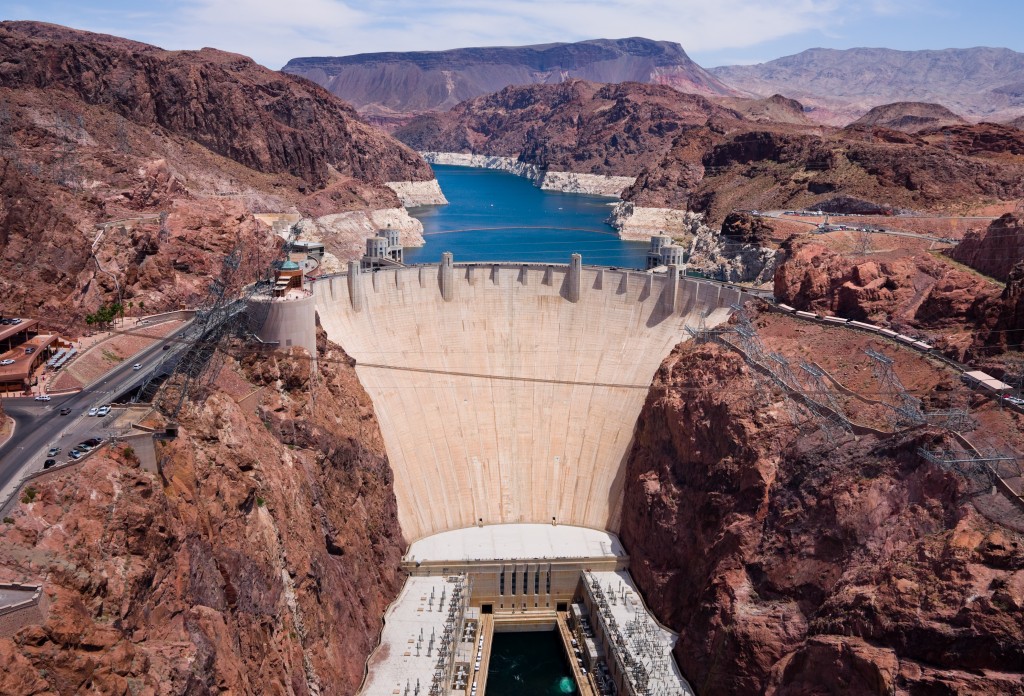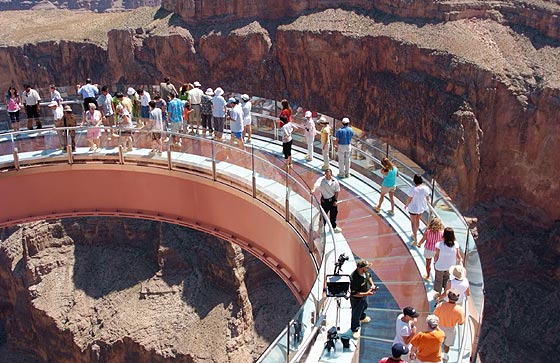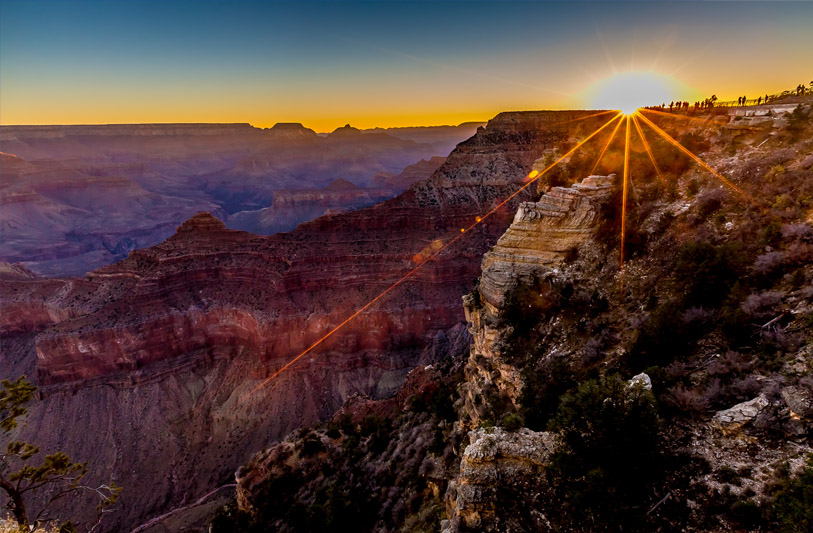Hoover Dam

At the time of construction (1935), Hoover Dam was the largest in the world and although long since surpassed it is still an amazing structure and a marvel of engineering – a huge, curving wall of plain concrete 660 feet thick at the base and 726 feet high set between the vertical walls of Black Canyon, accompanied by strangely-angled pylons, cables, power generating plants and other machinery. In 1955, the dam was selected as one of the Seven Modern Engineering Wonders in the USA by the American Society of Civil Engineers, and it is was later designated a National Historic Landmark. Also known as Boulder Dam, the usual name commemorates the 31st president Herbert Hoover, who was in office during the start of the project.
Grand Canyon West Rim

The main advantage of the West Rim is its proximity to Las Vegas. It is only a two-hour drive or a 15-minute flight from Las Vegas to the West Rim, whereas it requires at least five hours to drive to the South Rim Visitor Center of Grand Canyon National Park. Many Las Vegas tour companies offer helicopter, bus or van tours to this West Rim. They can pick you up at your hotel in the morning, take you on a tour of the west rim and return you to your hotel the same afternoon.
Grand Canyon South Rim

Grand Canyon National Park, a World Heritage Site, encompasses 1,218,375 acres and lies on the Colorado Plateau in northwestern Arizona. The land is semi-arid and consists of raised plateaus and structural basins typical of the southwestern United States. Drainage systems have cut deeply through the rock, forming numerous steep-walled canyons. Forests are found at higher elevations, while the lower elevations are made up of a series of desert basins.





